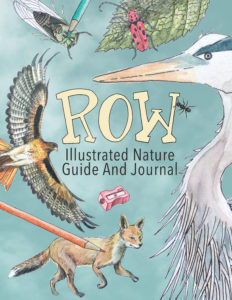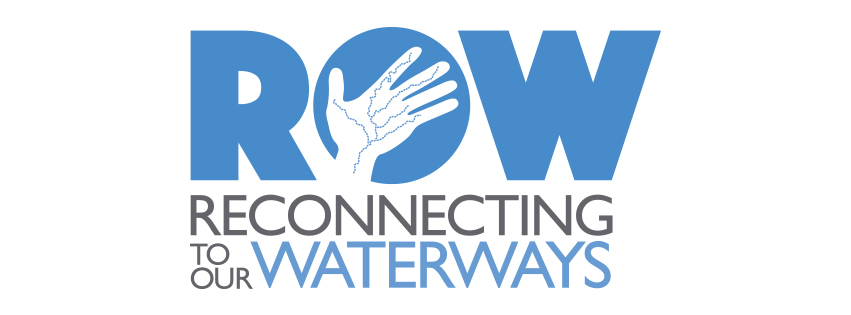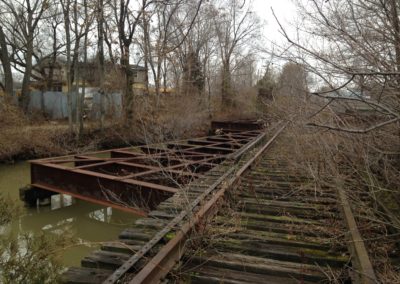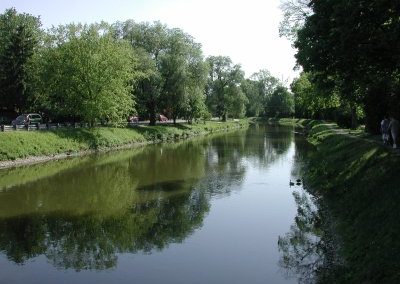Success Story: Recreation Along Our Waterways
How it can inspire outdoor community involvement
Hoosiers live near many waterways right in the Indianapolis area, but many residents might not be aware of the numerous opportunities that exist to engage with them. Reconnecting to Our Waterways works with several organizations to promote what some of our waterways have to offer for outdoor recreation. These initiatives help reconnect the community to their waterways and allow people to get involved with the simple beauties of nature that exist so close to home.
Investing in the White River
The White River stretches all through Indiana including Indianapolis where it provides the enriching opportunity to hike trails, admire wildlife, engage with nearby parks, or participate in activities right on the water, like canoeing, kayaking, or fishing.
Creating Beauty on the White River from Reconnecting to Our Waterways on Vimeo.
It is vital to encourage activities that cause people to appreciate and engage directly with their waterways in a new way, and no one knows this better than Kevin Hardie, the executive director of the Friends of the White River. Friends of the White River and ROW work together to generate awareness surrounding the largest waterway contained inside Indiana.
Bringing people to water sources and parks they often didn’t realize were right in their backyards gives them a deeper understanding and appreciation
“We don’t have mountains, we don’t have a bay, we don’t have a beach, but we do have a river, and those parks are gateways to the river that people can enjoy all throughout the year,” he said.
Friends of the White River brings people from different backgrounds together opening their eyes to the recreational possibilities that abound along these rivers helping them to better understand
Activities at these parks and waterways are many. For example, people could tour White River State Park by biking along the trail, boating in a kayak or pedal boat, or simply taking a casual stroll and admiring the beauty of the area. People could also check out Riverside Park. Just five miles from downtown, this park has a boat launch, playgrounds, fun family center with something for everyone to enjoy, including a gymnasium, weight room, craft room, an outdoor pool, and different areas to picnic and play nearly any sport. Each of these presents an opportunity to escape the concrete jungle for a relaxing and enriching experience with nature that’s still very close to home.
“These parks are real gems in terms of abilities for individuals,
According to Hardie, whenever people utilize a waterway, they begin to understand its potential and recognize its value.
“[The White River] is an amenity that has both environmental and economic value, the parks along it are doorways that allow people to have an encounter that can lead to stewardship, and when you have an ethic of stewardship you have a willingness to make investments in that natural infrastructure to provide for its ongoing
Creating awareness around the waterways is the first step in motivating people to interact with and then care about their environment. One way the Friends of the White River works towards this goal is with their phone app, the White River Guide. The app guides individuals from wherever they are to access points on and along the White River all throughout Central Indiana. It serves as a digital brochure and a great resource for people to discover new opportunities on the river. This app is a great partner item to ROW’s own Illustrated Nature Guide and Journal.

“When you experience something you come to have a better understanding of its potential,” Hardie said. “You see not only the
“You get an entirely different perspective on the water or along the banks than you do simply driving over a bridge,” Hardie added.
Discovering beautiful waterways like the White River right in the middle of the city brings people to a simple, yet important realization: they don’t have to drive hours away to experience nature.
Fishing along the banks of Fall Creek
Another waterway that presents several recreational opportunities is Fall Creek. People can observe the wildlife there, canoe, kayak, and fish along the banks.
Not everyone is comfortable getting directly on the water, so fishing can be relaxing and a great opportunity to educate citizens, specifically young people, on the existence of the waterways and their environmental impact. Certain banks surrounding Fall Creek are good to fish, which is why Chuck Madden takes the Outdoor Youth Exploration Academy there often. The OYA provides
“It gives them a chance to be mentored, a chance to self-reflect and a chance to experience things they wouldn’t normally experience,” Madden said. “They appreciate it, and they appreciate having a waterway, or a river, or a creek, or a pond to see. They’re taught something.”
The little lessons today’s youth can learn from nature are endless. They can grow to respect the power of the waterways seeing it as a potential food source, but also realizing the dangers of human impact on the environment.
The OYA works towards this goal through partnerships with organizations like the Dirty Dozen Hunting and Fishing club, who have also worked with ROW. Similar to the OYA, the Dirty Dozen gives youth the chance to hunt, fish and enjoy the great outdoors. The club now funds local youth programming, covering land conservation issues,
One of the original founders of the Dirty Dozen, Joe King, is very passionate about Fall Creek, as he was raised there. He feels an obligation to care for it and has been doing so for years. Kings says it is of the utmost importance to take care of this area now so that future generations can enjoy it for years to come. While taking advantage of the recreational opportunities on the water is important, King also gave another suggestion for appreciating the water.
“If you have a problem, go find some water, go sit out on the creek or river bank and just concentrate, putting your mind at ease,” King said. “If you do that, I guarantee within an hour your problem will be solved.”
Whether as a form of self-therapy to escape the day-to-day or way for kids and parents to bond through a great activity like fishing, waterways like Fall Creek are building community every day.
It is important to note that in order to fish in Indiana, you need the proper fishing license. Fans of fishing also need to consider which fish are safe to eat and which ones should be thrown back. Many fish in Indiana waterways are edible, but
ROW continues to work with our partners and communities to improve the quality of these waterways and reduce the pollution we currently see. We encourage you to always research your fishing spot before you eat your catch of the day!
A Celebration of the Central Canal
Another waterway with plenty of recreational options stretches from Broad Ripple all the way to 16th Street: the Central Canal. Similar to the White River and Fall Creek, the Central Canal provides a place for people to enjoy themselves without having to travel far. However, you cannot use the Central Canal for on-water activities. Despite this, ROW committee member and local resident Deborah Stoll says the Canal is her favorite place to exercise and escape.
“The part that’s precious about the Canal is you don’t feel like you’re in the city at all,” Stoll said. “You’re in the woods; you’re not looking at houses. It’s a wonderful little urban oasis.”
The Canal presents the community with unique options for engaging with waterways. It teaches people that you don’t always have to be on the water to appreciate it. You can bike, walk or even cross-country ski along the trails there while happily admiring the snapping turtles and beautiful birds flying overhead. As you’re doing that, take in the water moving alongside you. Stoll, who spends plenty of time in this area, mentioned that she often finds the greatest sense of peace from simply staring at the water.
The greenways also serve as linear parks; the Central Canal Towpath is an official part of the Indianapolis Parks system. So, riding your bike down the Towpath or walking along Fall Creek Trail, Pleasant Run Trail, White River Trail, Eagle Creek Trail, or Pogue’s Run Trail is also an easy way to invest in our community’s parks. To learn more about where trails are located along Indy waterways, visit ROW’s interactive metric map and view the connectivity layer.
“Parks have always been a linkage between the river and the people of the community ever since the park system was first established,” Hardie said.
Here at ROW, we work to preserve that linkage and create new opportunities for involvement with both the waterways and the parks nearby. Interested in getting involved with those recreational opportunities? Attend the next ROW committee meeting for your favorite waterway to learn how you can make a difference in bettering our communities. Learn more here.



